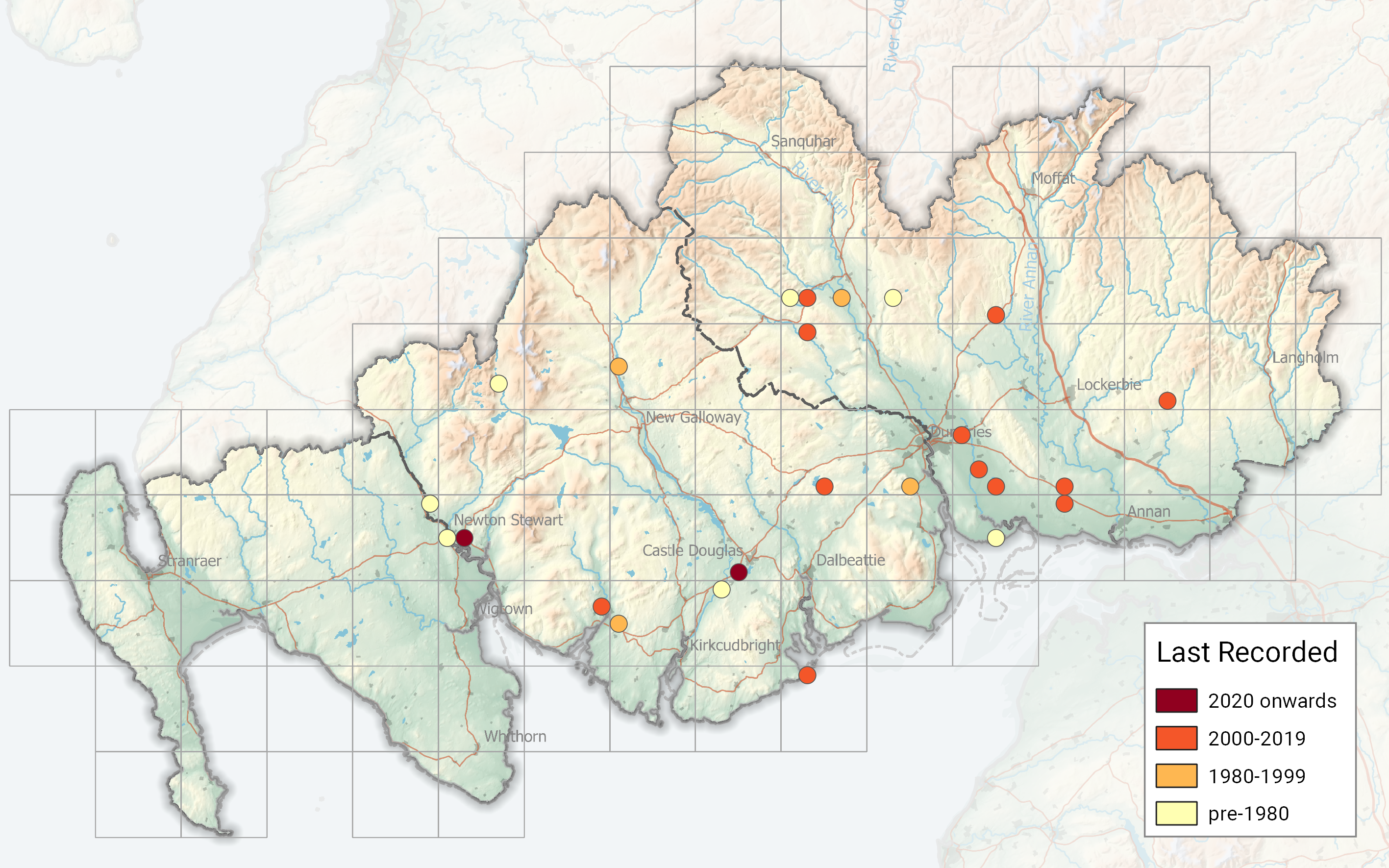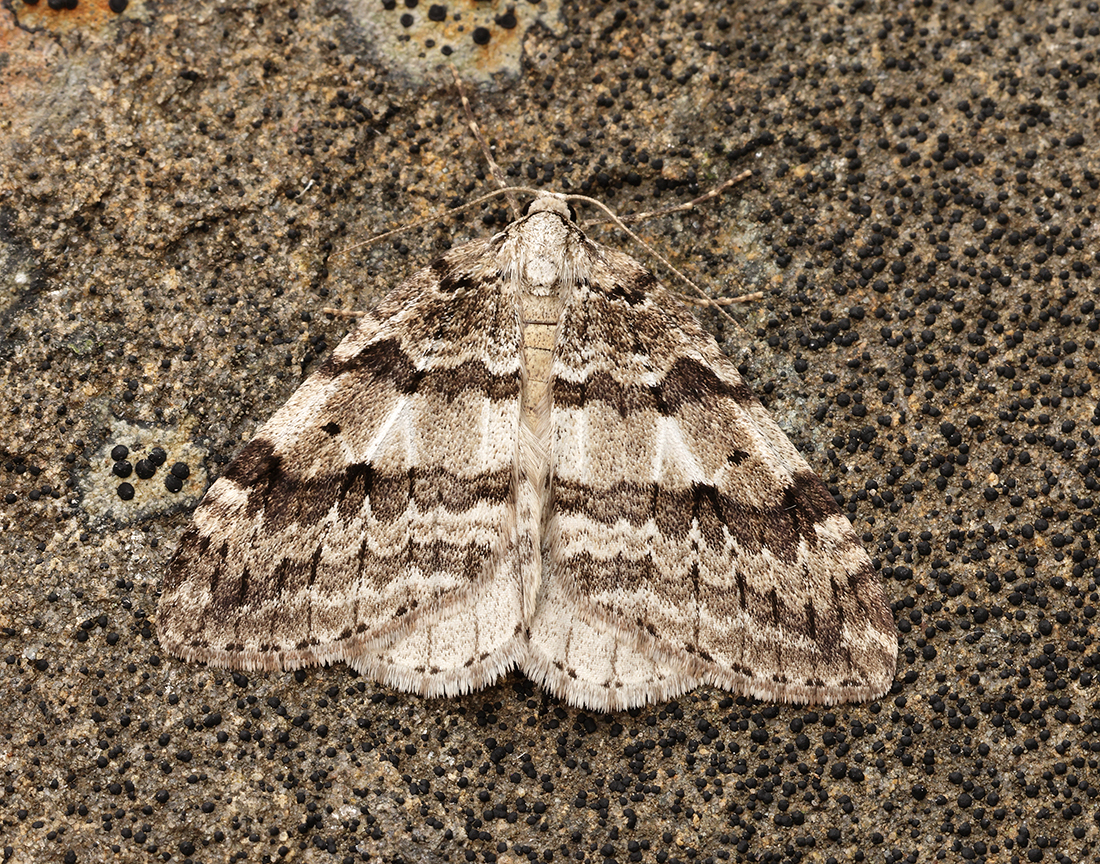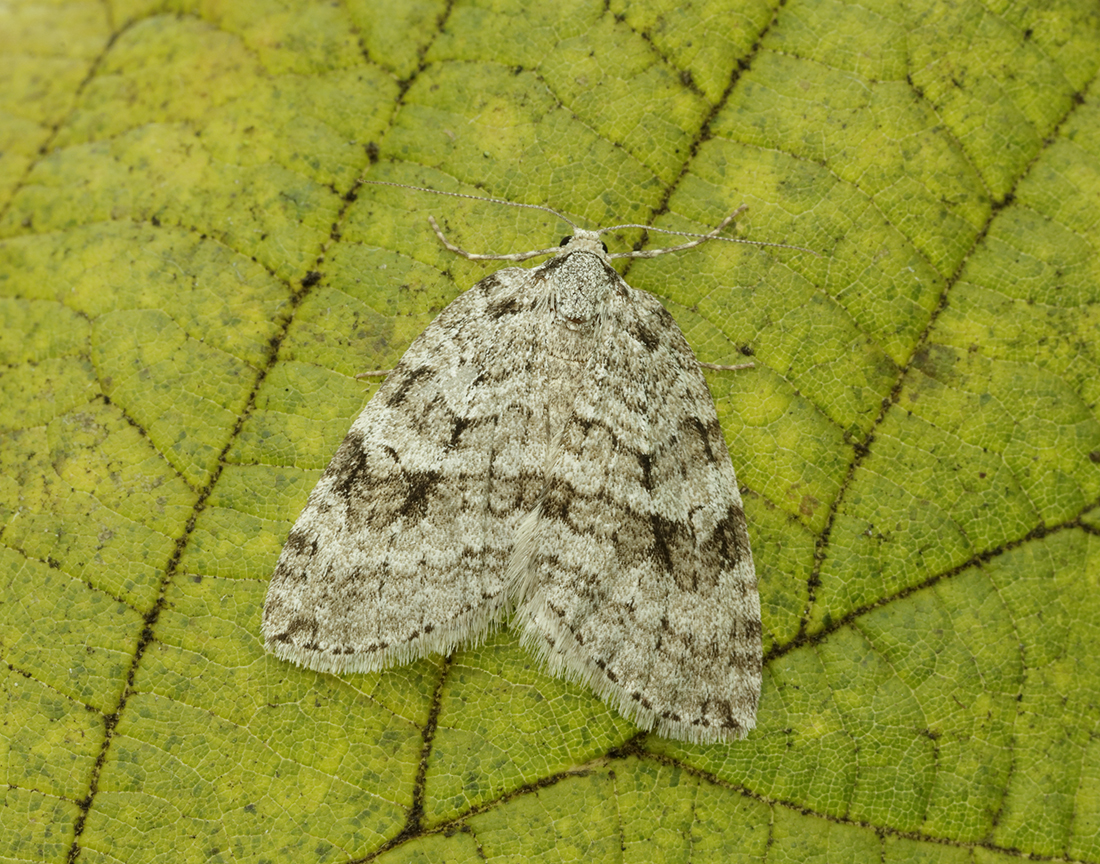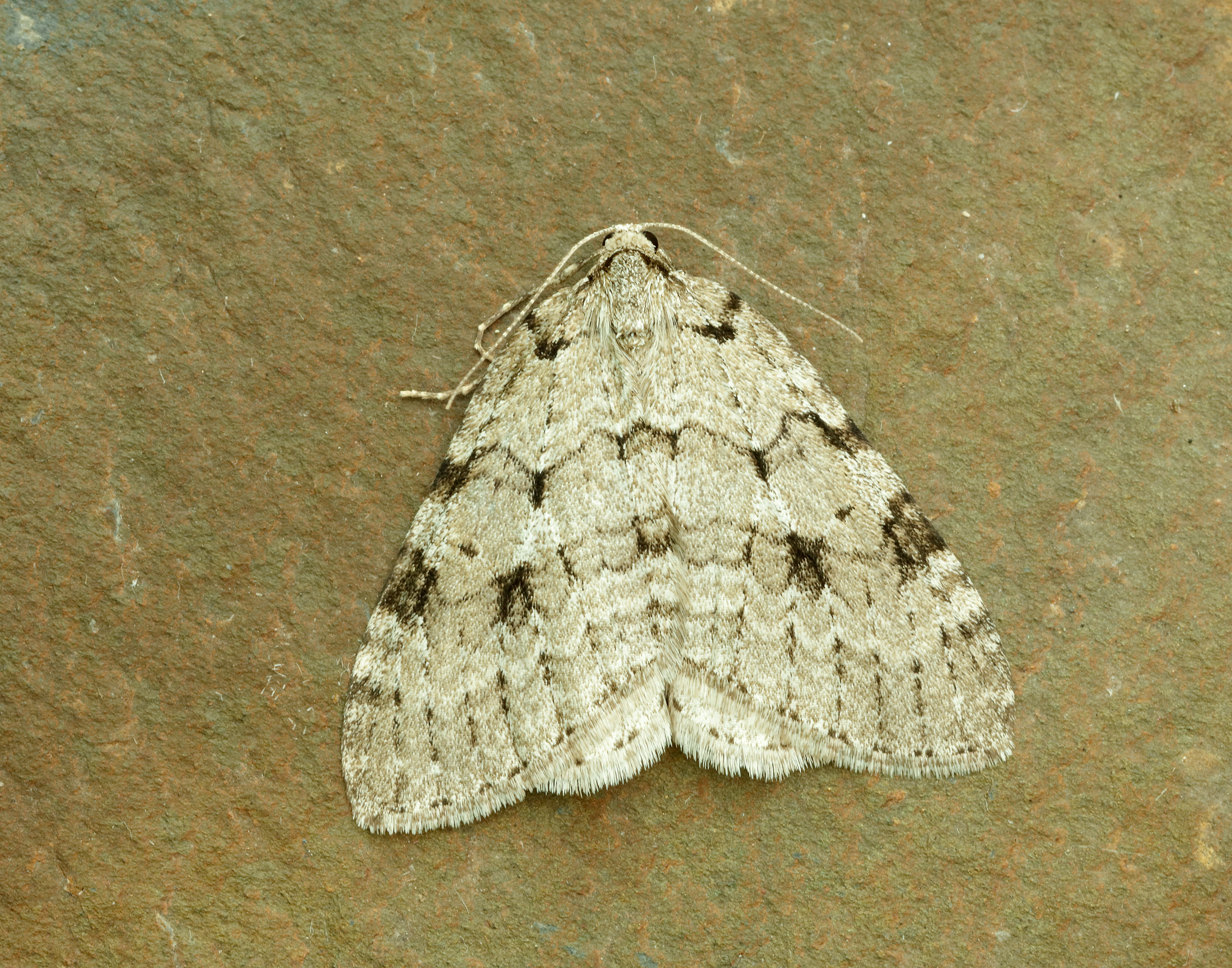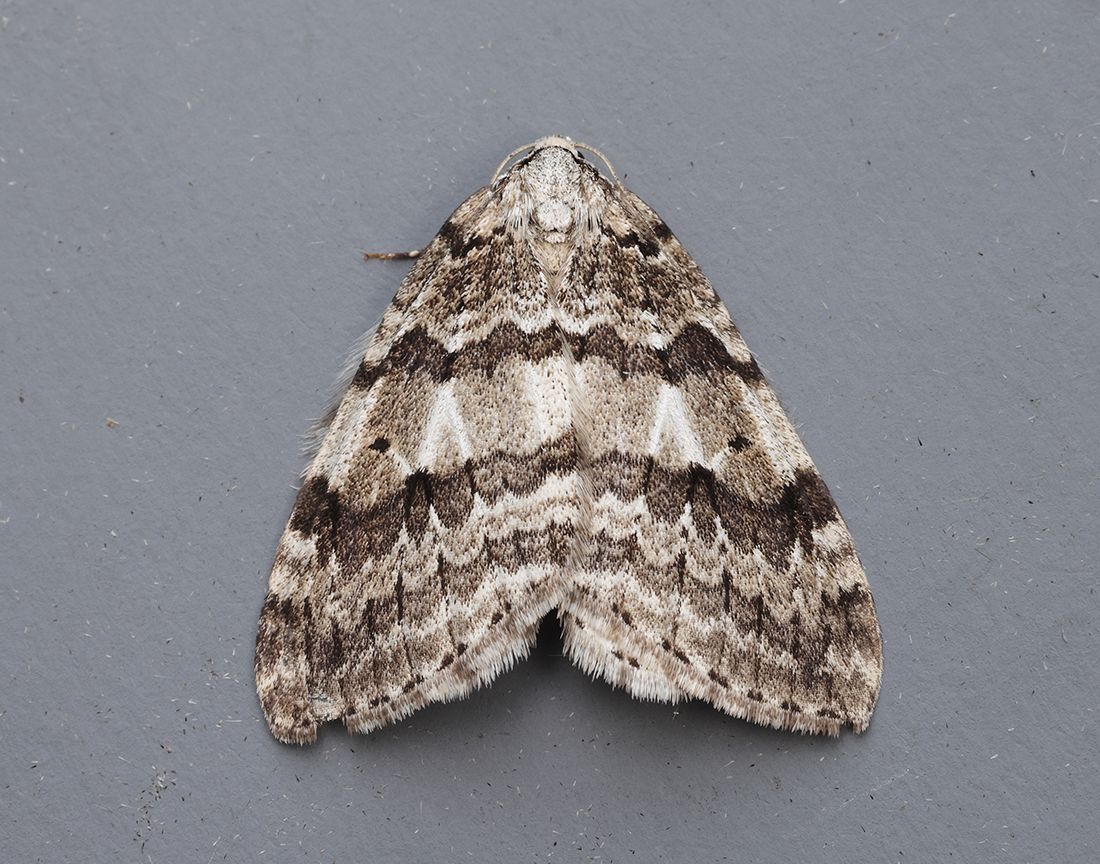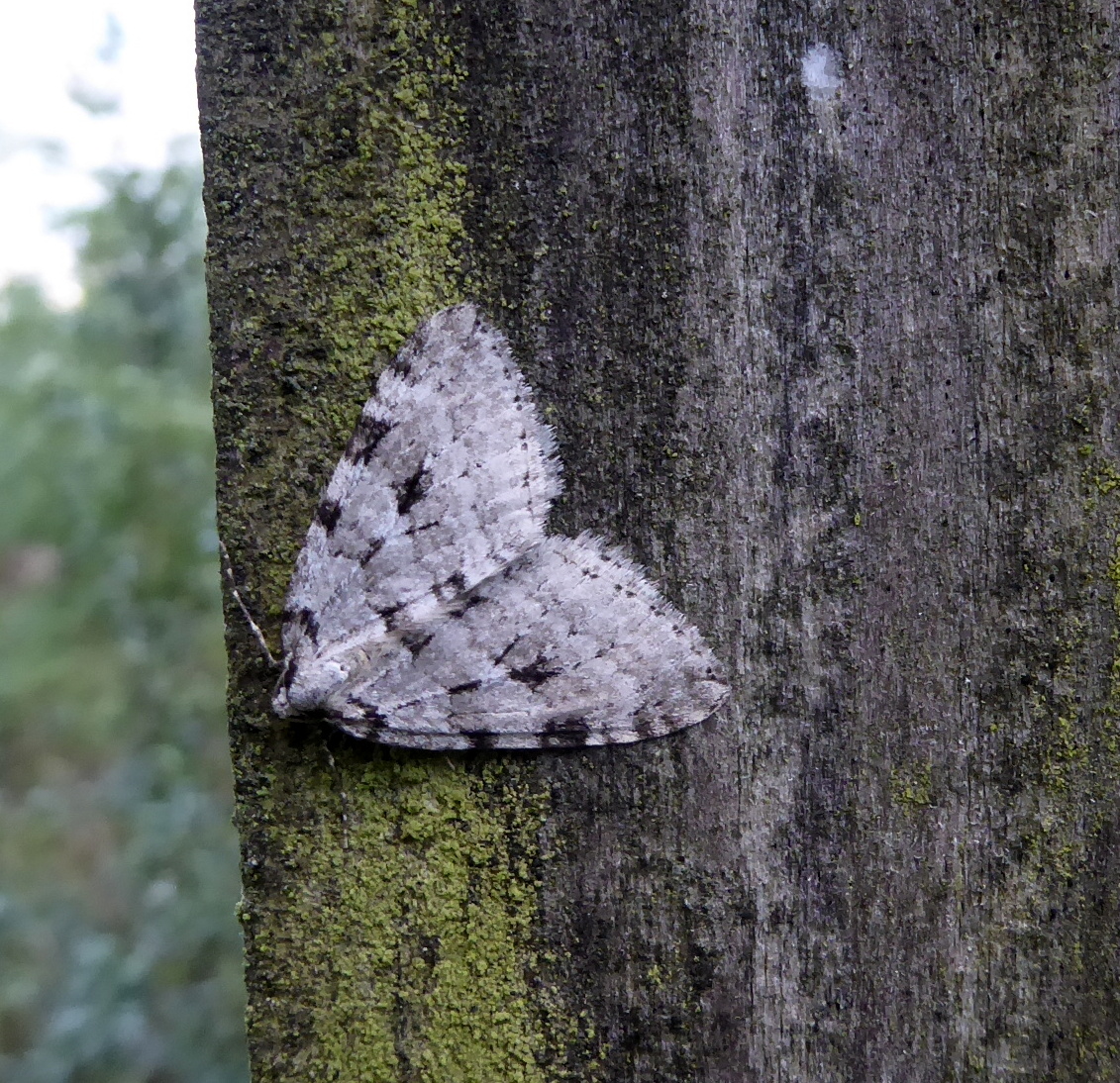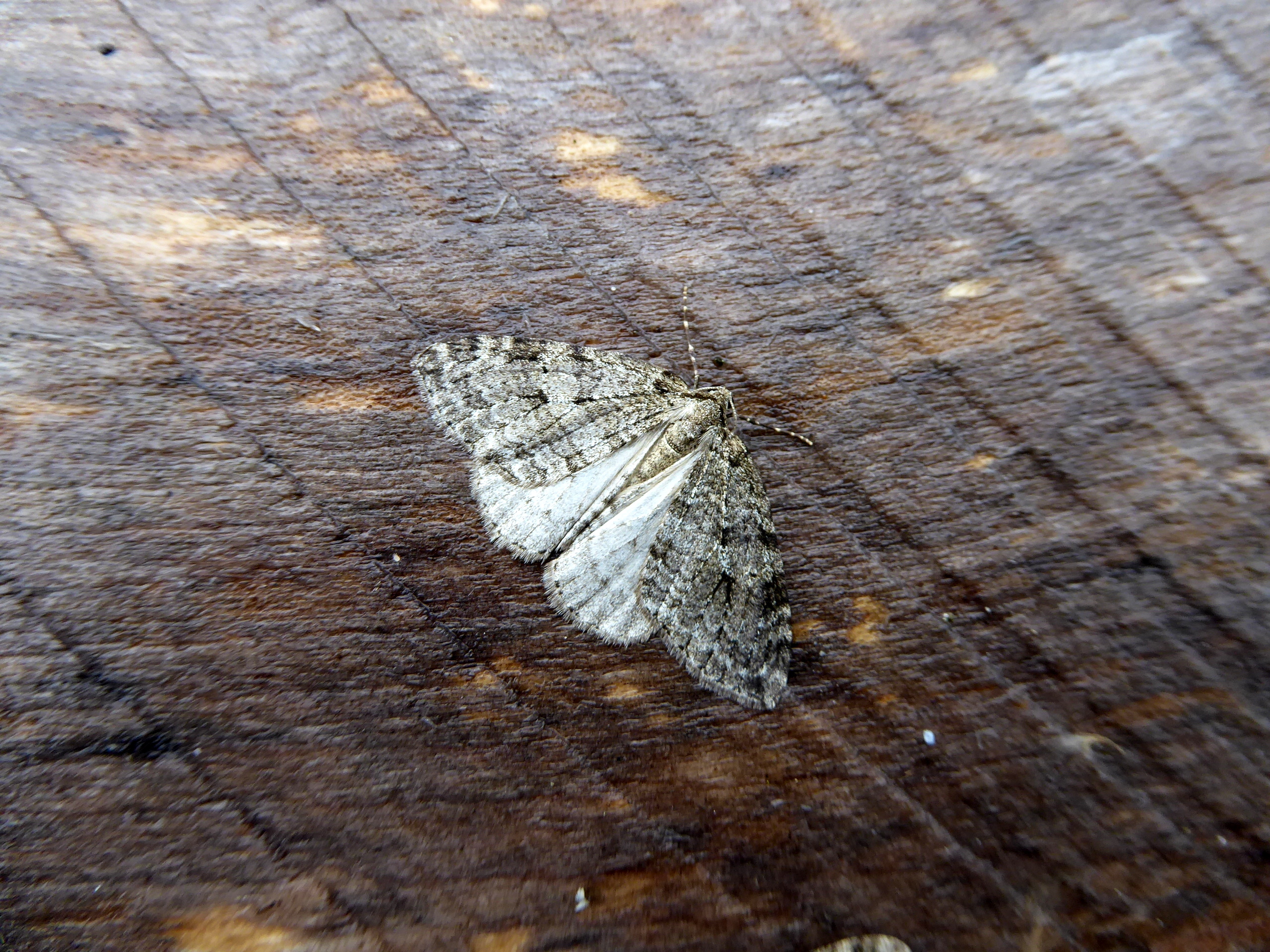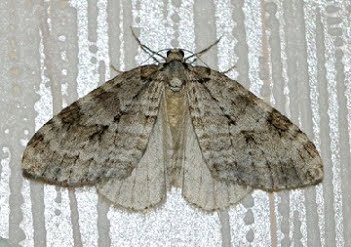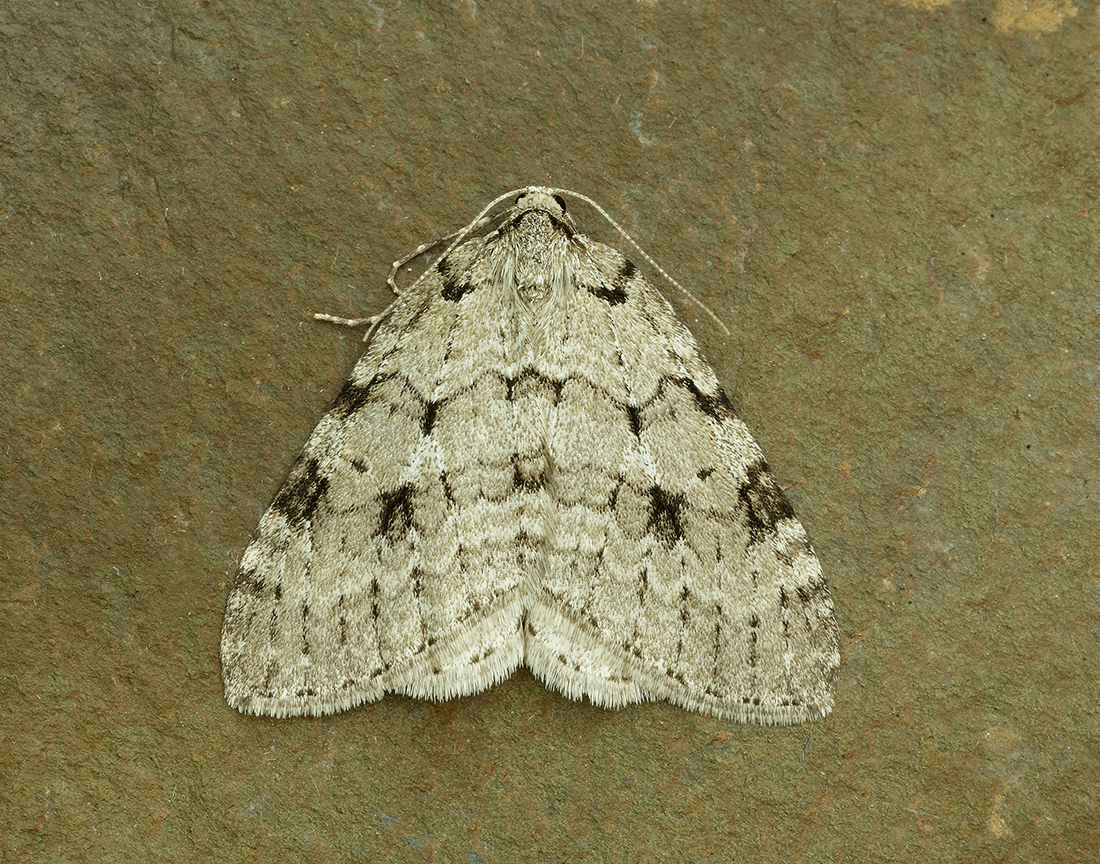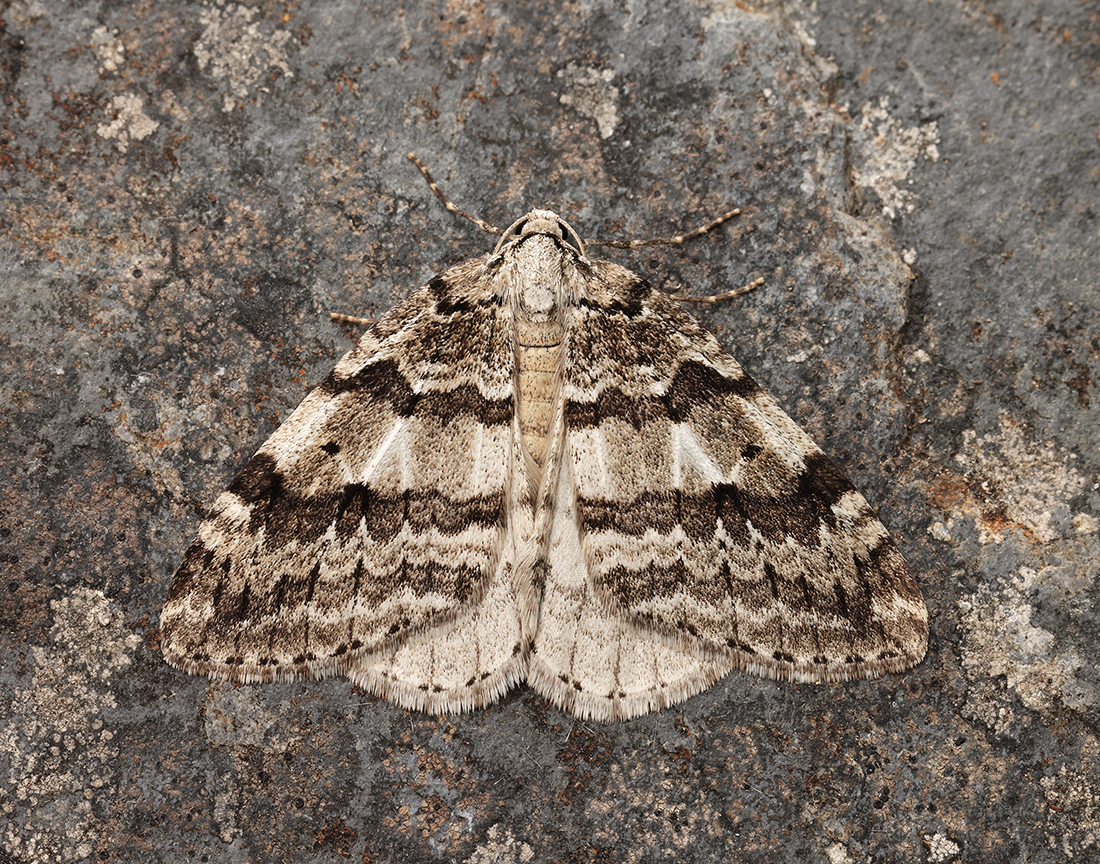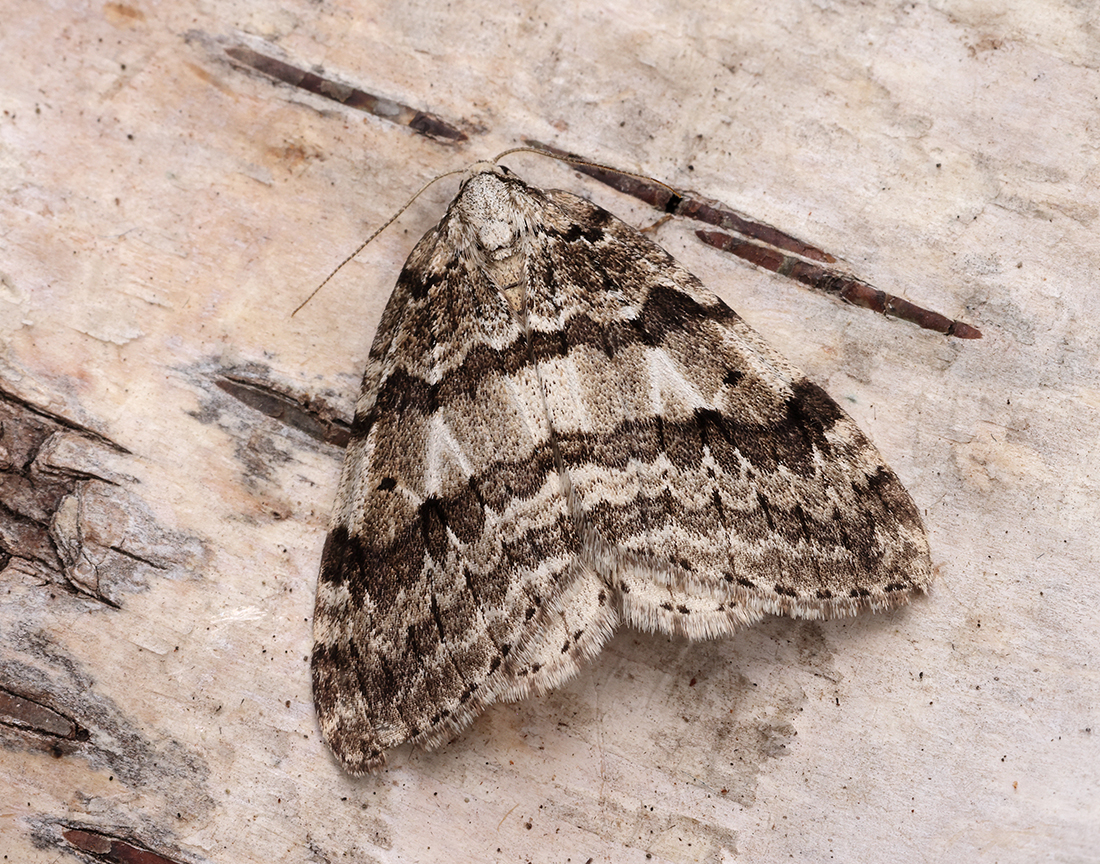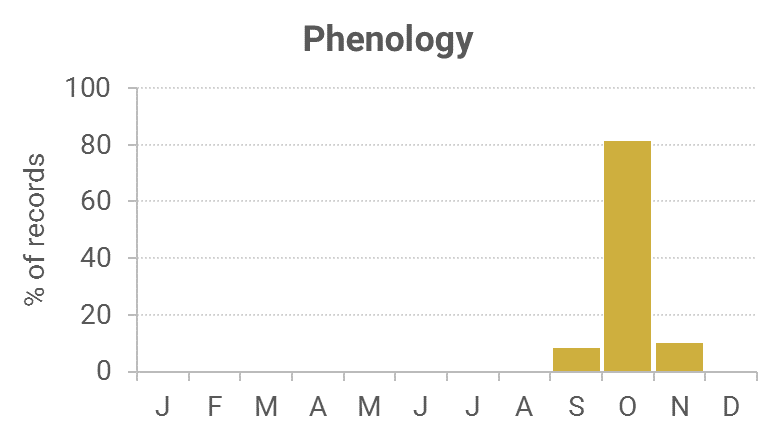Identification
The four Epirrita moths are notoriously difficult to separate, but this one can be identified by the discal spot (which is a round dot or an oval) which is small and distinct and well clear of the fascia, but sometimes it is almost touching. The post-median fascia near the discal spot is sharply angled at about 90 degrees.
Only the males can be separated by checking the genitalia, the female Autumnal Moth and Small Autumnal Moth are inseparable. But larvae could be collected and bred on.
Record undissected specimens as November Moth agg. (Epirrita dilutata agg.).
Recording method
Comes to light
Life cycle
One generation. It overwinters as an egg on bark or a twig. Larvae appear during May and June, after pupating underground.
Larval foodplants
Birch and Alder, also Heather.
Habitat
Woodland and scattered trees. Autumnal Moth loves birch especially in small clumps on moorland or heathland. It usually has a silvery-grey ground colour to blend in when resting on the birch bark.
History
First recorded for Dumfries and Galloway in 1946 for VC72 at Tynron by Duncan, in 1970 for VC73 at Silver Flowe NNR by Hulme and in 1976 for VC74 at Penninghame House, north of Newton Stewart in the Rothamsted light trap there.
It is one of the last of the Epirrita moths to emerge, peaking around mid-October.

